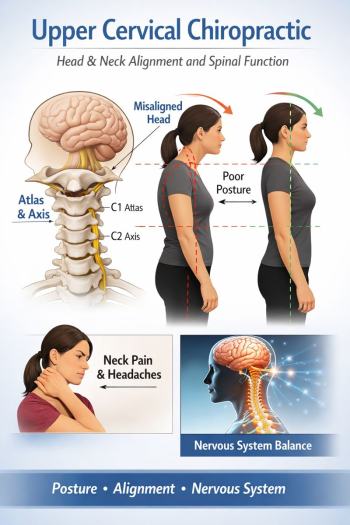
Upper cervical chiropractors specialize in addressing misalignments in the uppermost part of the spine, specifically the atlas (C1) and axis (C2) vertebrae. These vertebrae support the skull and house the brainstem, which is integral to maintaining balance and spatial orientation.
Dizziness and giddiness are common symptoms arising from disruptions in the nervous system, blood flow, or vestibular function, all of which can be influenced by misalignments in the upper cervical spine.
By downloading the Digital Patient Chart mobile app you can better control your patient portal.
Understanding Dizziness and Giddiness
Dizziness, a sensation of lightheadedness or unsteadiness, and giddiness, characterized by spinning or a loss of equilibrium, can stem from various conditions:
- Vestibular dysfunction: Issues with the inner ear's balance system.
- Neurological disruptions: Brainstem interference can alter sensory input and motor control.
- Blood flow abnormalities: Misaligned vertebrae may impede blood supply to the brain.
The Role of Upper Cervical Chiropractic Care
Upper cervical chiropractors focus on ensuring the proper alignment of the atlas and axis vertebrae. These adjustments are gentle and precise, aiming to:
- Restore Nervous System Communication: Misalignments can compress the brainstem or spinal cord, disrupting nerve signals crucial for balance.
- Improve Circulation: Proper vertebral alignment facilitates unimpeded blood flow to the brain, addressing symptoms of dizziness.
- Optimize Vestibular Function: Adjustments help alleviate tension and improve functionality in the inner ear's balance system.
Benefits of Upper Cervical Adjustments for Dizziness
Upper cervical care has shown effectiveness in managing dizziness and giddiness due to its holistic approach. Key benefits include:
- Reduction in Symptoms: Studies suggest significant improvement in patients experiencing vertigo and related issues following upper cervical adjustments.
- Non-invasive Treatment: Avoiding surgery or medications makes it a preferred method for those seeking natural remedies.
- Improved Quality of Life: Relief from persistent dizziness enables better participation in daily activities.
Case Studies and Evidence
Research from upper cervical chiropractic clinics demonstrates the potential for these adjustments to resolve dizziness. For example:
Case 1: Atlas Subluxation: A patient with chronic dizziness experienced full symptom resolution after correcting atlas misalignment.
Case 2: Improved Vestibular Function: Consistent chiropractic care led to restored balance and reduced vertigo episodes for a long-term sufferer.
Chiropractic Assessment and Treatment Process
1. Initial Consultation and Examination: Detailed history-taking of symptoms, lifestyle, and medical background.
2. Assessment of posture, spinal alignment, and neurological function.
3. Imaging: X-rays or advanced imaging techniques to identify specific misalignments.
4. Precision Adjustments: Gentle, targeted techniques to realign the cervical vertebrae without excessive force.
5. Follow-Up Care: Ongoing assessments to ensure the alignment holds and symptoms remain alleviated.
Conclusion
Upper cervical chiropractic care offers a promising avenue for alleviating dizziness and giddiness by addressing root causes linked to spinal alignment. Its emphasis on non-invasive and precise treatment aligns well with holistic health goals, making it an ideal choice for those seeking relief from debilitating symptoms.









Leave a comment